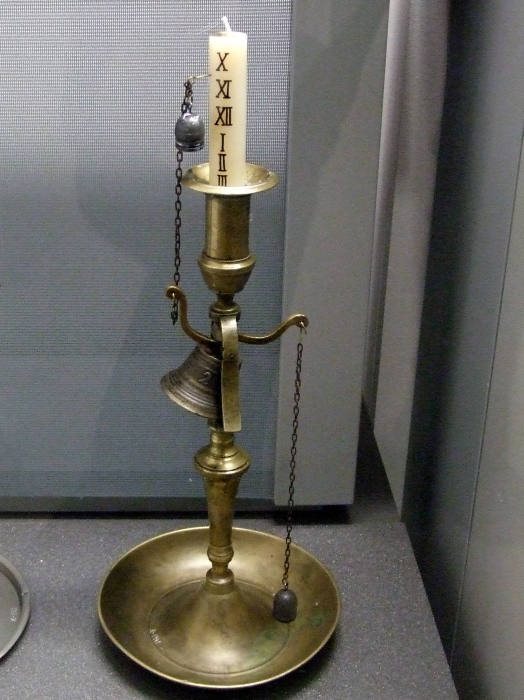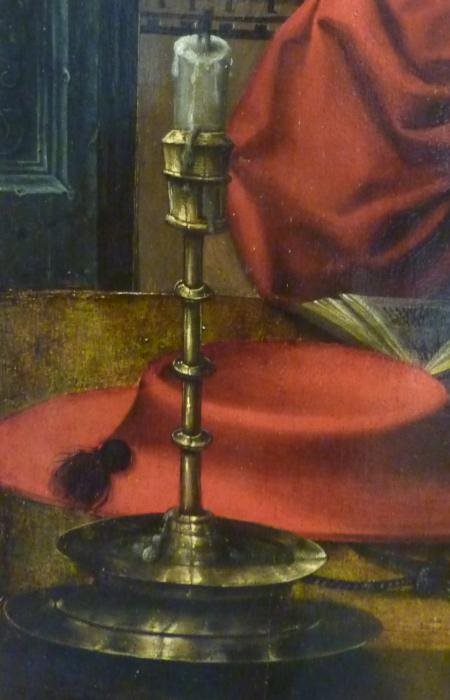After being invented in Asia, the fire clock, also known as a combustion clock, arrived in Europe around the 8th century AD. In order to replace the hourglass, which had to be returned at regular intervals, it made it possible to measure the time by the use of a fuel whose burning was at the same time slow and uniform, and therefore predictable – candle or oil contained in a lamp. Let’s discover the history of this clock.
The clock of fire, an incense system
It is in Asia that the clock is born, especially in China – Japan adopted it later. Traces of its use date back to the 6th century BC
The principle is simple: we use sticks coated with combustible paste, what is now called incense. Because it burns at a fixed speed, incense is an excellent indicator of the passage of time. The rod is placed on a horizontal support, most often a hollow lacquered object. As it burns, the incense stick crosses graduations that calculate the elapsed time.
Another way to mark the hours is to arrange, at regular intervals along the rod, weighted silk threads, on each side, with small suspended masses (typically metal balls). When the combustion reaches a wire, it burns and releases the masses that fall into a metallic receptacle, producing a recognizable noise. Thus, not only did the Chinese invent the chronometer (a calculation of a relatively precise duration, represented by the length of the incense stick), but they also imagined the alarm clock!
With the aesthetic care of ancient China, the lacquered brackets of the incense clocks, on which are placed the sticks, have nothing vulgar containers. The archetypal model is what is called a dragon boat: a pedestal in the form of a boat, whose bow and stern represent the head and tail of a dragon. Around the support, two receptacles make it possible to receive the balls held by the silk threads.
Measure the time at the candle
The fire clock arrived in Europe in the eighth century, possibly adopted (or reinvented?) By a monk who needed a system of time measurement to count the hours at night between each prayer. The combustible stick of the Chinese incense clock is replaced by a candle, a height of one meter, graduated regularly to mark the hours. Thus, the burning of the candle indicates the number of hours elapsed, with a precision that depends on several criteria: candle regularity, quality of the wax, thickness and distance between the lines, and of course drafts.
In fact, the first uses of the fuel clock are reserved for religious congregations, so that they can best respect the schedule of prayers during the night. Three 1-meter candles are usually needed to arrive until dawn. This device quickly spread throughout medieval Europe.
The candle has, therefore, always been a symbol of the flow of time, and its burning the representation of the passage of time – until our days when we continue to blow candles to celebrate birthdays. Before the invention of the oil lamp, the candle was used in the theater to enlighten the stage and the actors – the duration of the act was thus conditioned to that of the burning of the candle. In the Middle Ages, it had also become a symbol of wealth: the wax candle, more luxurious than its tallow equivalent, was the preserve of wealthy families. And it could not be used as a fire clock in the less endowed homes, which had to preserve it as long as possible.
The evolution of the fuel clock
Between Asia and medieval Europe, another model of fire clock develops, inspired by both candle and incense: the labyrinth clock. On a support, using a gate, creating a “course” with pulp incense, or with any combustible powder along the convolutions of a Mandala shaped labyrinth (in system closed), the length of which depends on the desired time. The end of the combustion indicates the flow of the desired duration.
The principle of the fuel clock is modernized from the fifteenth century with the invention of oil lamps. These are then equipped with graduated tanks that allow to appreciate the passage of the hours as the wick being consumed, the oil level drops along the graduations.
As its evolutions and its passages from one continent to another, the clock has kept its basic operating principle, unalterable. It took the invention of watches and mechanical clocks to put an end to the dominance of this ingenious system of time measurement.


 Français
Français
